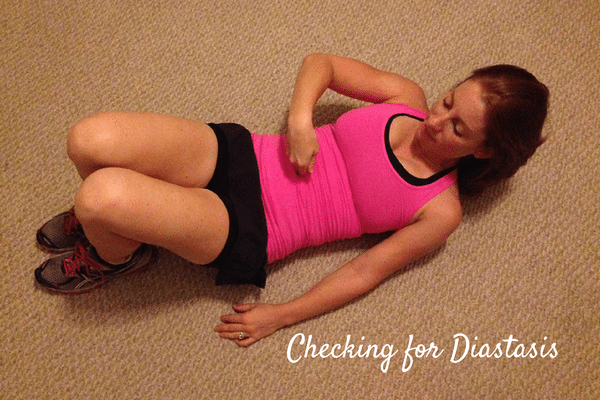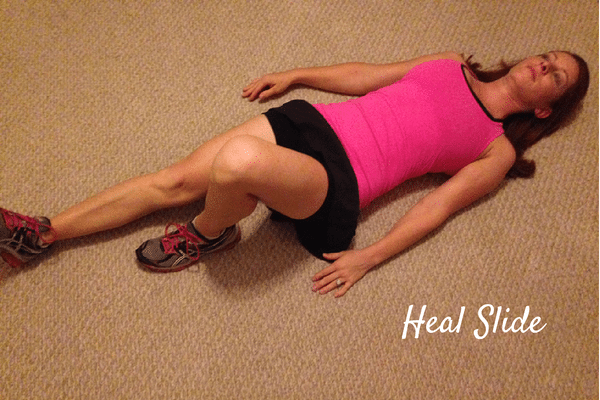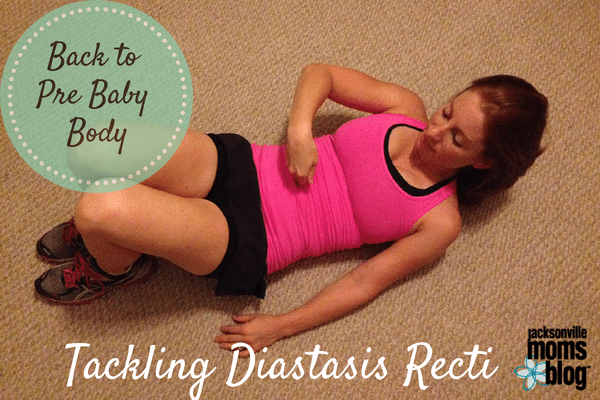I remember the first time I heard the term diastasis recti. “dia-what?” I said to myself. By the time I had heard it my daughter was close to two years old, and I was admittedly surprised I had gone that long without hearing of it. I soon found out most pregnant and postpartum women had no idea what diastasis recti is either, let alone how to fix it.
By the time I had my second daughter I was well aware of what it was, meaning I knew its definition. I quickly learned a lot more when Stroller Strength owner Mary Lauren Eubank told me about a postpartum class called 4th Trimester Fitness with Emily Wannenburg that focused almost exclusively on diastasis recti and the pelvic floor. So naturally I signed up.
For those of you who are still saying “dia-what” let me fill you in. Diastasis Recti is a separation of the rectus abdominis muscle into right and left halves. You often get this separation from pregnancy and/or childbirth. The separation is created by the stretching of the linea alba, which connects the right and left regions.
Since many women don’t know what diastasis recti is they are completely unaware of the affects it could have postpartum until of course, they start having problems. And, as I learned at 4th Trimester Fitness, those problems can range from a tummy pooch that just won’t go away, to back pain, peeing yourself and even a hernia. So, with that said let’s jump right into how you can check for diastasis recti and how to heal it.
How to test for diastasis recti:
1. Lie on your back with your knees bent, and the soles of your feet on the floor (like you’re going to perform a crunch), arms by your side.
2. Place your fingertips diagonally across your stomach at the level of your belly button and gently press your fingertips into your abdomen.
3. Bring your head neck and shoulders up off the ground as if you were doing a crunch (careful not to lift too high as you could get a false reading) and activate your abdominal wall. Move your fingertips back and forth and up and down your midline to check for any gaps you may have between the rectus abdominus. The separation, if any, will be pretty obvious once you start feeling around.
Signs of Diastasis Recti:
▪ A gap of more than 2 1/2 finger-widths
▪ A deep gap
▪ The gap does not shrink as you contract your abdominal wall.
I still have a bit of diastasis recti right above my belly button. Even when I am standing, I can see it. There is a small cave in that area where my stomach falls in. This area and right below the belly button is the most common place to have diastasis and often hardest to close but in most cases it can be closed. You just need to focus on certain non-traditional ab exercises and avoid the usual ab exercises you were performing pre-pregnancy.
Exercises to avoid:
• Plank on toes
• Crunches
• Sit-Ups
• Yoga postures that stretch the abs such as “cat cow”
• Pushups due to the plank (you can still do pushups just do a modified version on your knees)
Exercises to help heal diastasis recti:
• Splinting (lie on your back with knees bent and feet together. Take both hands and dig into your belly on the sides, under your “cushioning.” Keep your fingers there and lift up your head, neck and shoulders. As you do, push the muscle together. Hold for 10 seconds and repeat ten times.
• Supine heel slide
• Supine knee raise
• Kegels with transverse ab tightening (tighten your abs as you do a Kegel but particularly those lower abs that aren’t activated as often)
Signs your Diastasis has healed:
You’ll know when your abdominal separation has healed when either your muscles are back together to less than two finger widths (if there is a little separation it should not be deep) or when your midline feels strong. Once your diastasis has healed you are no longer at risk for a hernia and your other symptoms should go away.
This is just the tip of the diastasis recti iceberg. If you are newly postpartum, I highly suggest you take 4th Trimester Fitness with Emily. She is not only a doula and a retired midwife but an expert on pelvic floor and has an incredible passion for all things mama and baby.





















Find out more about diastasis rehab at:
http://befitmom.com/diastasis_recti.html
I’m curious to know if Emily believes in splinting. I have had people purchasing splints from all around the world as it is not a new theory on diastasis recti repair. I like to keep everyone up to date on the beliefs of various professionals.
The thoughts on the use of belly bands or material splints is divided amongst those that work with diastasis of the rectus muscle (DRAM). I am personally not a fan of long term use of abdominal splints /bellybands for a DRAM (not to be confused with pelvic girdle bands for pelvic girdle pain or pubic separation that maybe prescribed by a Pelvic Floor Physical Therapist). From a women’s health and fitness prospective, I prefer that the abdominal muscles “learn” to hold themselves in and together! (Helene Byrne does a beautiful job of describing that above in her link.)
Learning to properly activate your Transverse Abdominus (TVA) is key to closing a DRAM and also helping to recover from pelvic floor weakness, injury, or dysfunction. In the postpartum class series, one hears “Activate & Engage” a lot…meaning activate the TVA and engage the pelvic floor.
Kudos to Jax Stroller Strong for encouraging their instructors to further their knowledge so that they can teach their mommas correctly!